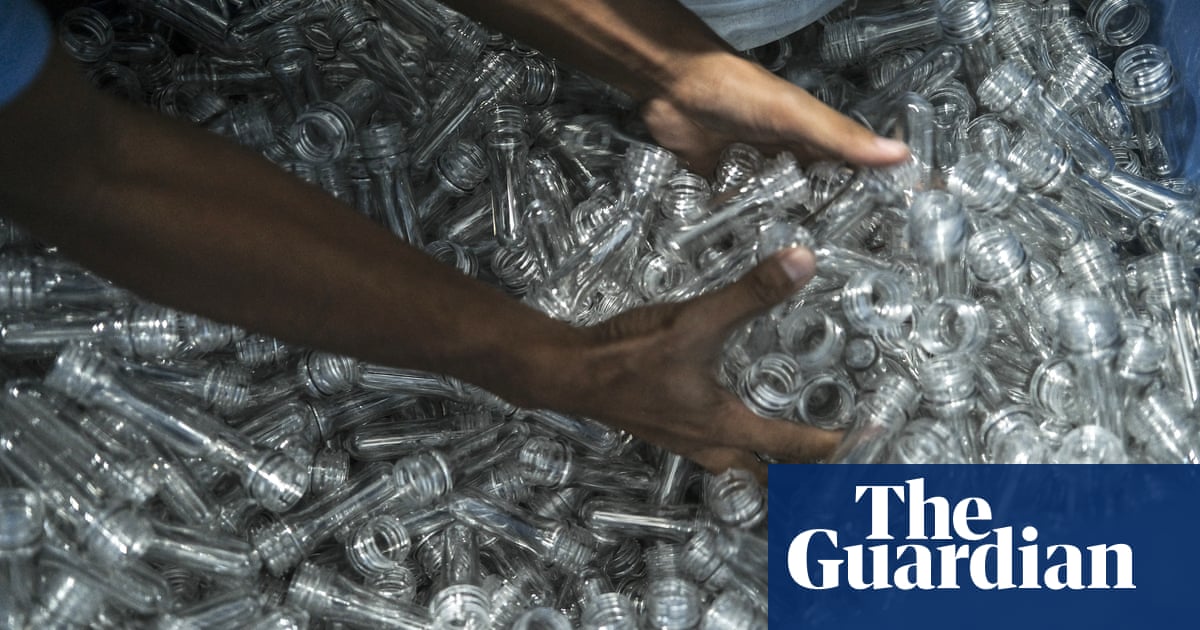
By the middle of the century, global emissions from plastic production could triple to account for one-fifth of the Earth’s remaining carbon budget, an analysis has found.
The stunning new estimates from Lawrence Berkeley National Laboratory, published Wednesday, provide yet more evidence the plastic industry is “undermining the world’s efforts to address climate change”, said Heather McTeer Toney, executive director of the Bloomberg Philanthropies’ Beyond Petrochemicals campaign, which helped fund the new report.
The production of plastic, which is made from fossil fuels, is greenhouse gas-intensive. Coal, oil or gas must first be mined or extracted, and then those materials must be refined and processed in another emissions-heavy procedure. In some cases, other chemical compounds such as formaldehyde must also be produced, creating more pollution.
Petrochemicals are then “cracked” into plastic building blocks such as ethylene – the aspect of plastic production with the largest emissions toll. Additional emissions come from the process of polymerization – combining those building blocks to form larger molecules – and then shaping them into products, the report says.
To estimate the total emissions associated with plastic production, the authors examined the greenhouse gas impact of nine of the most common types of plastics, which are used to create plastic packaging, water bottles, hot beverage containers and other materials.
Plastic creation generated 2.24 gigatonnes of planet-heating pollution in 2019, or as much as 600 coal-fired power plants. That year, it accounted for 5% of all global carbon emissions, 12% of the world’s oil demand and 8.5% of gas demand, the report found.
Those numbers are expected to increase dramatically, the report says, because the plastic industry is on an exponential growth trajectory, with production expected to double or even triple by 2050.
If production increases by 4% every year, doubling within a quarter of a century, planet-warming emissions could hit 6.78 gigatonnes by 2050 – equal to the emissions of more than 1,700 coal plants.
Fully decarbonizing the power grid – a key focus of global climate plans – could limit this climate impact, yet would still leave the world on a perilous path. As much as 70% of the fossil fuel used in plastic creation comes from the raw materials used in production – not the electricity used in processing – the authors write.
As a result, even if the world achieves fully carbon-free electricity by 2050, plastic production would produce 5.13 gigatonnes of pollution in 2050 under a 4% annual growth scenario.
Preventing this explosive growth could slash this impact. But even if production remains steady, by 2050 it would account for 15 to 19% of the remaining global carbon budget to keep global average temperatures at 1.5C, the report found.
Even with a fully decarbonized grid, that percentage could still be up to 16%.
The report was released before the 4th Intergovernmental Negotiating Committee (INC4) meeting for a global plastics treaty set to start next week in Ottawa, Canada.
Neil Tangri, science and policy director at the environmental justice group Global Alliance for Incinerator Alternatives, who reviewed the report, said the findings make it clear that plastic production is a “wrecking ball for our climate” and that he hopes it influences the forthcoming negotiations.
“This report provides negotiators with the strongest scientific evidence to date on the need to stop and reverse the expansion of plastic production,” he said.
In a brief forthcoming analysis based on the estimates, Tangri’s organization found that the estimates suggest plastic production could completely consume the world’s carbon budget before the century’s end. But they also suggest that curbing plastic production could yield enormous climate benefits, Tangri said.
“If this treaty forces companies to significantly cut plastic production – by at least 12% per year by our calculations – we can still keep the world’s 1.5 degree goal alive and stem the climate impacts of plastic,” he said.
Curbing plastic production could have other positive knock-on effects, the authors wrote, including on public health.
“Petrochemicals, the building block of plastic, are already poisoning communities that neighbor production facilities with cancer-causing pollution,” Toney said in an emailed statement. “The consequences of this industry’s unfettered carbon emissions will reach everyone on the planet.”
Plastic also generates toxic and planet-heating emissions at the end of its life if it is burned in an incinerator or sent to a landfill.
Despite this massive climate toll, current proposals to slash plastic pollution under the treaty, which has been described as the most important environmental deal since the 2015 Paris Climate Accord, “do not yet include any explicit consideration of climate impacts”, the authors wrote.